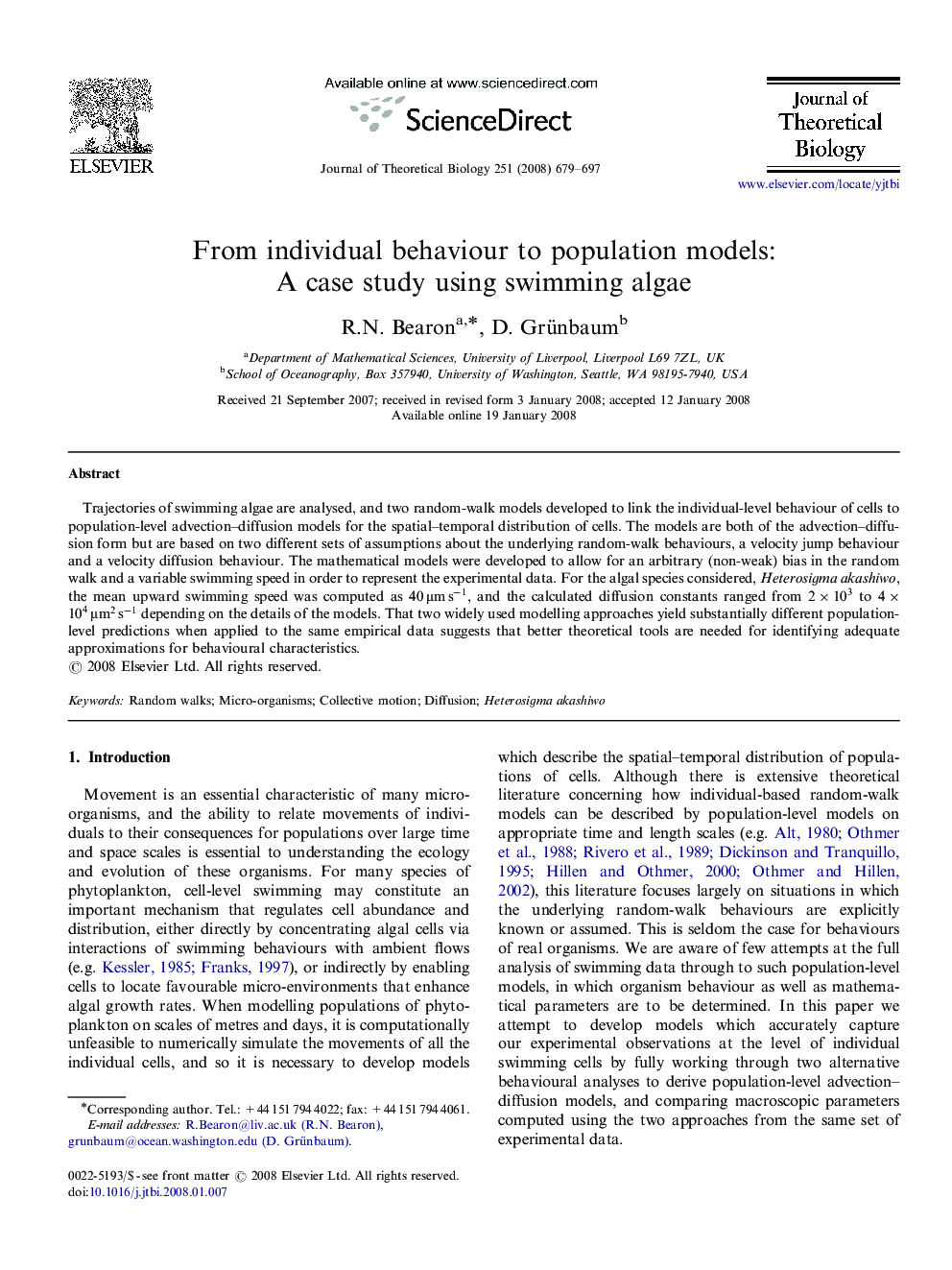| Article ID | Journal | Published Year | Pages | File Type |
|---|---|---|---|---|
| 4498487 | Journal of Theoretical Biology | 2008 | 19 Pages |
Trajectories of swimming algae are analysed, and two random-walk models developed to link the individual-level behaviour of cells to population-level advection–diffusion models for the spatial–temporal distribution of cells. The models are both of the advection–diffusion form but are based on two different sets of assumptions about the underlying random-walk behaviours, a velocity jump behaviour and a velocity diffusion behaviour. The mathematical models were developed to allow for an arbitrary (non-weak) bias in the random walk and a variable swimming speed in order to represent the experimental data. For the algal species considered, Heterosigma akashiwo , the mean upward swimming speed was computed as 40μms-1, and the calculated diffusion constants ranged from 2×1032×103 to 4×104μm2s-1 depending on the details of the models. That two widely used modelling approaches yield substantially different population-level predictions when applied to the same empirical data suggests that better theoretical tools are needed for identifying adequate approximations for behavioural characteristics.
